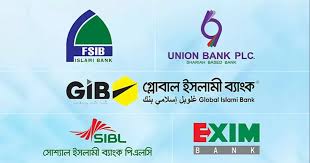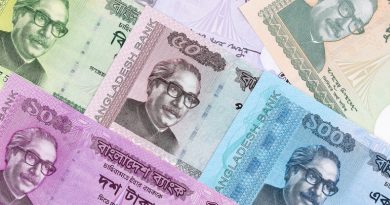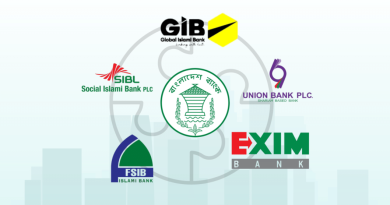Bangladesh Bank’s unprecedented move to merge five troubled Shariah-based banks into a single state-run entity has triggered a storm of concern among experts, industry insiders, and depositors. While the plan aims to stabilise a deeply fragile segment of the country’s financial sector, it is already facing serious roadblocks—ranging from sky-high loan defaults to legal, political, and operational hurdles.
The five banks—Union Bank, First Security Islami Bank, Global Islami Bank, Social Islami Bank, and Exim Bank—are at the centre of a massive financial crisis. Combined, their non-performing loans (NPLs) have ballooned to Tk1,47,000 crore, or 77% of total loans. Union Bank alone has a default rate of 98%, followed closely by First Security (96%) and Global Islami (95%).
This means a vast portion of customers’ deposits are effectively stuck. To stay afloat, the banks have relied heavily on emergency liquidity support from the central bank. Their combined deposits dropped to Tk1,36,546 crore in May—down from Tk1,59,000 crore a year earlier—while loans surged to Tk1,95,413 crore. The provision shortfall has reached Tk74,501 crore.
Complex and Costly
The merger, though seen as necessary, is anything but simple. It comes with an estimated cost of Tk35,000 crore—Tk25,000 crore from the national budget and another Tk10,000 crore from the Deposit Insurance Trust Fund. This would require amendments to existing legislation to allow public funds to be used in this manner.
“This isn’t a normal banking consolidation,” said one economist. “The biggest challenges are recovering stolen assets, securing capable management, and preventing political interference.” Complicating matters further are forged documents and assets smuggled abroad, making any recovery efforts even tougher.
Forced vs. Voluntary Mergers
Globally, bank mergers usually occur after internal restructuring and are often initiated by the banks themselves. In contrast, Bangladesh’s forced approach—without a full clean-up or partner institutions—could deepen instability.
“Internationally, weak banks merge into stronger ones after audits and negotiations,” said another expert. “But here, we’re forcing five weak banks into one, which may just amplify the crisis instead of solving it.”
Resistance from Within
Not all stakeholders are on board. Exim Bank and Social Islami Bank have formally requested exclusion from the merger plan, citing relatively better financials and internal reforms. Directors and shareholders have also expressed concerns over reputational damage and potential asset dilution.
Adding to the uncertainty are fears of branch closures and job losses. While Bangladesh Bank has promised to open new rural branches and invest locally to cushion the blow, insiders say it will be difficult to avoid layoffs.
Long Road Ahead
Credit rating agency S&P Global Ratings has warned that structural weaknesses will continue to plague the banking sector until at least 2026, citing poor lending standards, governance failures, and high credit risk.
The merger may help preserve some depositor confidence in the short term, but real stability could take years to materialise. Until then, depositors remain anxious, employees are in limbo, and the broader financial system remains exposed.
Despite the bold intentions, Bangladesh’s most ambitious banking reform in years now teeters between necessity and risk—a fix that might take far longer than hoped, and cost far more than expected.






